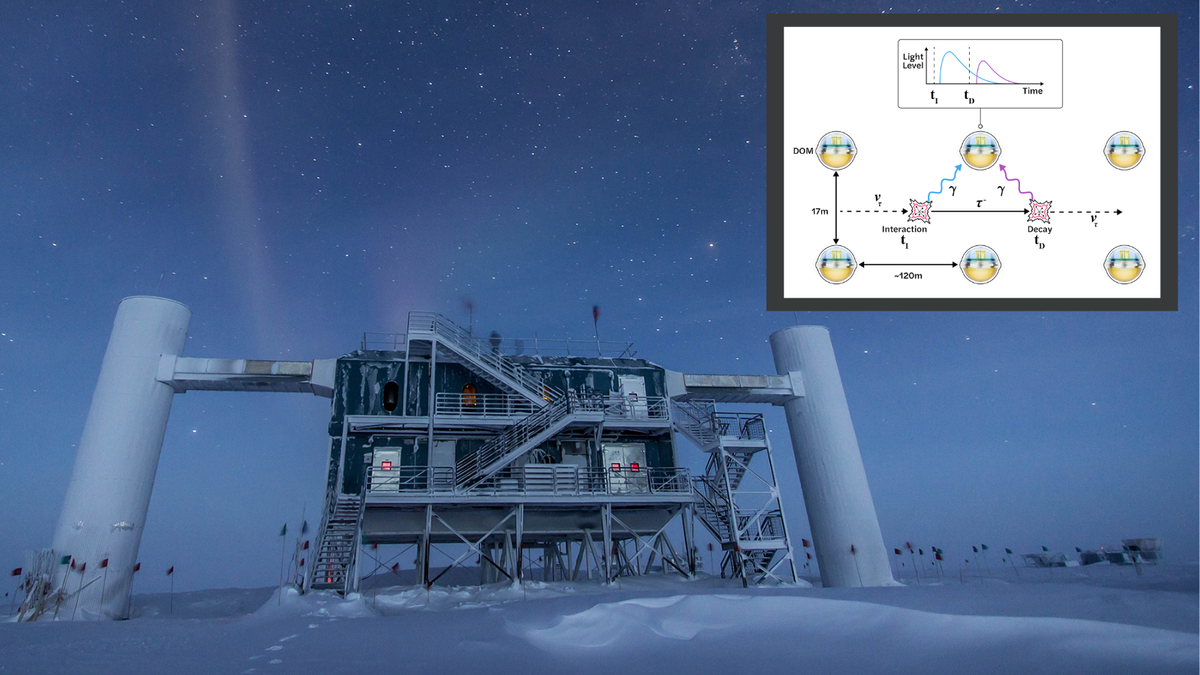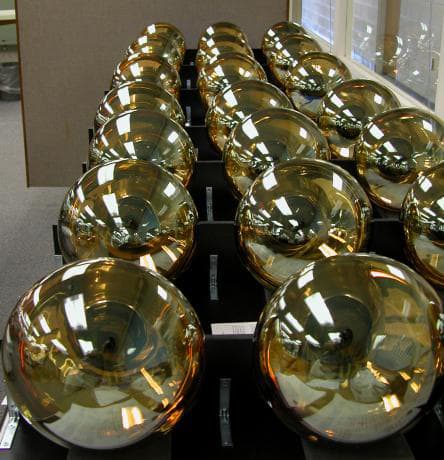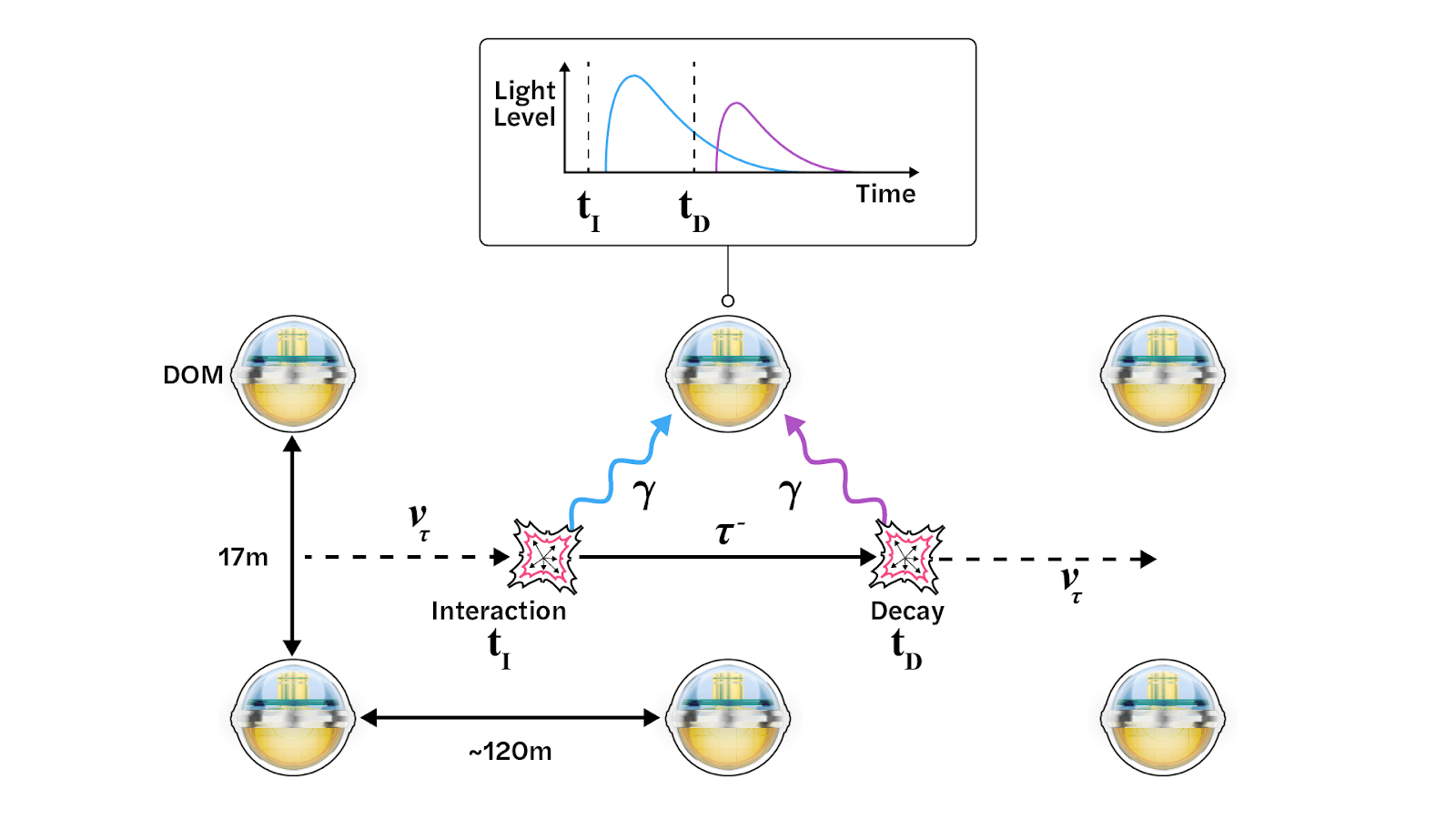
Astronomers using the Ice Cube Observatory, buried deep within the Antarctic ice, have discovered seven elusive and strange candidates for “ghost particles” as they stream across Earth. Signs indicate that these particles are astrophysical tau neutrinos; They serve as important messengers between powerful, high-energy celestial events and us.
Neutrinos are nearly chargeless and massless particles that blast through the universe at speeds approaching the speed of light. Oddly enough, because of these factors, neutrinos hardly interact with anything. In fact, about 100 trillion of them pass through our bodies every second. We can't tell. If you were a human-sized neutrino detector, you would have to wait about 100 years for a neutrino to interact with a particle in your body. So, with good reason, neutrinos are nicknamed “ghost particles.”
High-energy neutrinos coming from cosmic sources at the edge of the Milky Way are called “astrophysical neutrinos,” and they come in three flavors or generations: electron neutrinos, muon neutrinos, and tau neutrinos. All of these chimeric particles are incredibly elusive, as you might expect, but identifying them is IceCube's job. In 2013, the observatory detected the first astrophysical neutrinos, and now it appears to have detected astrophysical tau neutrinos in particular that could serve as an entirely new kind of cosmic message.
Related: A nearby supernova could reveal the secret life of ghostly neutrinos. Here's how.
“The discovery of seven possible tau neutrino events in the data, combined with the very low amount of expected background, allows us to claim that it is very unlikely that the backgrounds conspire to produce seven imposter neutrinos,” said Doug Quinn, one of the study’s co-authors. Leader and professor of physics at Pennsylvania State University He said in a statement. “The discovery of astrophysical tau neutrinos also provides strong confirmation of Ice Cube's previous detection of astrophysical diffuse neutrino flux.”

Trapped under the ice
To detect neutrinos as they pass through Earth, IceCube uses strings of golden balls called digital optical modules, or DOMs, embedded in the ice. In all, the observatory contains 5,160 DOMs buried deep in the Antarctic ice, waiting for neutrinos to interact with molecules in the ice and produce charged particles. These charged particles emit blue light as they travel through the ice themselves, and DOMs record this light.
More specifically, when high-energy astrophysical tau neutrinos interact with particles, they produce distinct light emissions, including a distinct double cascade event that produces two peaks in the light levels detected by DOMs.

In the past, Ice Cube had managed to pick up tantalizing hints of tau neutrino signatures, but Quinn and his colleagues really wanted to identify the elusive particles.
Other neutrino flavors can be detected in “real time” by IceCube, but the facility currently cannot do this for tau neutrinos. Instead, hunting down these particular cosmic ghosts requires studying a decade of archival data. But instead of going full Scooby-Doo and chasing these ghosts themselves, the team trained what's known as “image classification-enhanced convolutional neural networks” to sift through nearly 10 years of IceCube data collected between 2011 and 2020 to search for the ghosts. Tau neutrino signatures.
This led to seven powerful tau neutrino candidate discoveries.
The team maintains the possibility that these findings are the result of misidentification, but Quinn explained that the chance of the background detected by DOM mimicking this signal is only 1 in 3.5 million.
The current results used just three series of DOM detectors, but future analyzes will rely on more of these icy golden pearls. This will not only increase the sample of tau neutrinos detected, but may also help scientists conduct the first-ever study of neutrino oscillations over three generations. This is the phenomenon by which neutrinos switch flavors as they travel across vast cosmic distances.
Understanding neutrino oscillations could be the key to determining how these ghostly particles are generated, what events caused them to hurtle through space in the first place, and why they are passed on to subsequent generations over time.
“Overall, this exciting discovery comes with the interesting potential to leverage tau neutrinos to reveal new physics,” Quinn concluded.
The team's research is featured in the arXiv paper repository and has been accepted for publication in the journal Physical review letters.

“Web maven. Infuriatingly humble beer geek. Bacon fanatic. Typical creator. Music expert.”





More Stories
Scientists confirm that monkeys do not have time to write Shakespeare: ScienceAlert
SpaceX launches 23 Starlink satellites from Florida (video and photos)
A new 3D map reveals strange, glowing filaments surrounding the supernova